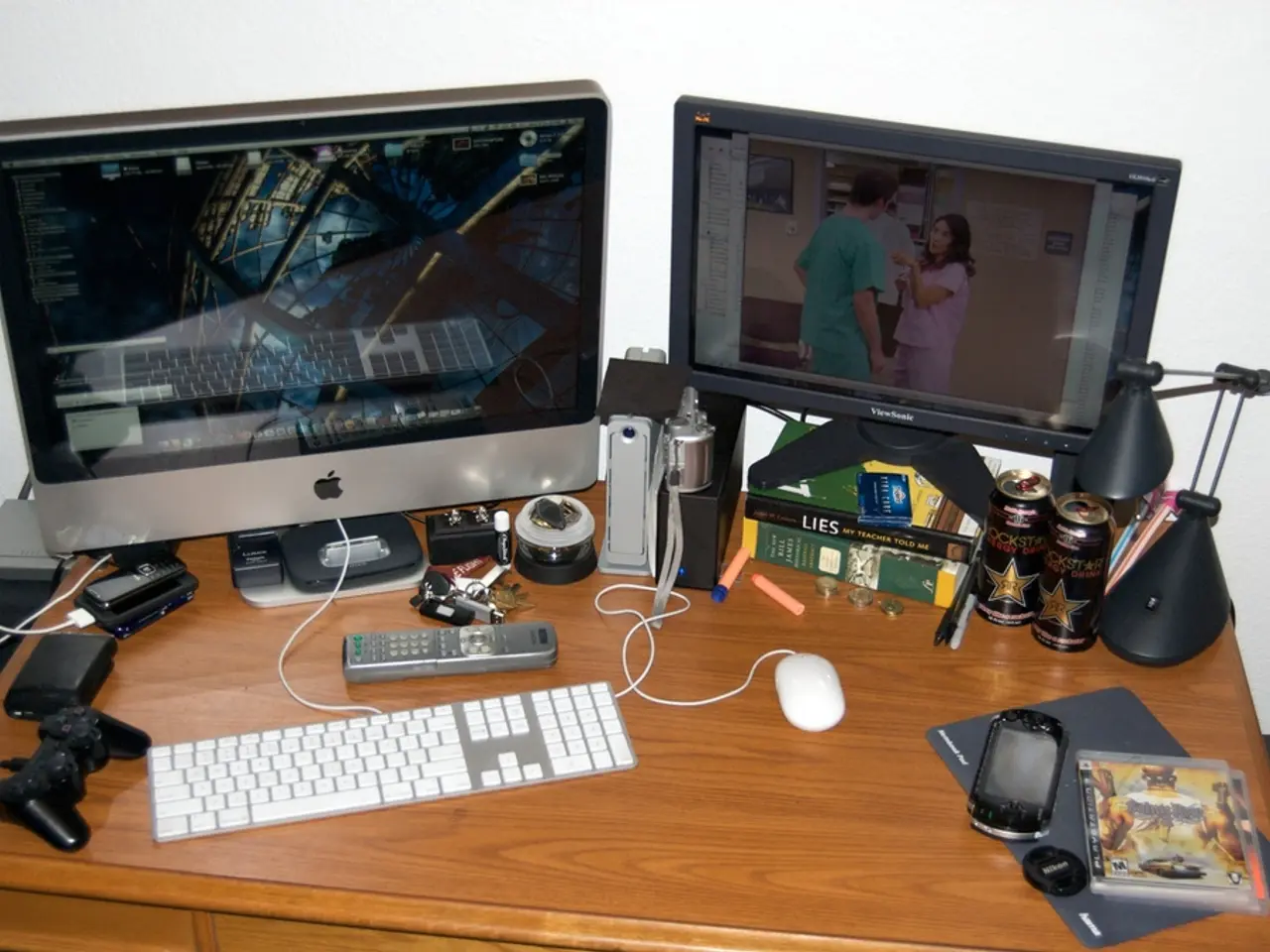Fed Up with Displays Boasting High Refresh Rates but Lacking Other Features
In the ever-evolving world of technology, displays are making significant strides, moving beyond the realm of high-refresh rate monitors. This article explores the latest advancements in unique and niche display technologies, focusing on head-tracking displays, 3D displays within augmented reality (AR) and virtual reality (VR) domains, and automotive display innovations.
Previously, the Zowie XL2540 was a favourite among professional gamers and tournaments, particularly in first-person shooter games. However, the new standard for Counter-Strike 2 tournaments is the Zowie XL2586X+, featuring a fast-TN LCD panel. While only gaming pros could possibly notice qualities up to 240 fps on a 240Hz monitor, some games like Overwatch 2, Apex Legends, or Valorant may benefit slightly from 360Hz displays, but only if a gaming machine can natively render above 240 fps.
The Samsung Odyssey OLED G6 G60SF, priced at nearly $1,500, is a QHD, 2,560 x 1,440 resolution panel with a 0.03ms response time. At 500Hz, this monitor can technically display every frame if a game can render at 500 fps. It boasts a claimed peak brightness of 1,000 nits with HDR, making it a formidable choice for high-performance gaming.
Beyond gaming, current advancements are shaping the future of AR/VR, much of it centred around eyewear and automotive sectors. Micro-OLED displays are advancing image quality remarkably, with examples like Sony-powered Viture Luma Pro glasses delivering very sharp details and brightness levels around 1000 nits. Rokid AR Spatial Glasses, with their 1200p resolution per eye and enhanced field of view, set new standards in AR visual experience.
In the automotive display market, LTPS TFT LCD and OLED panels are being integrated, emphasizing higher resolution, brightness, and power efficiency relevant for cockpit systems and driver heads-up displays (HUDs). These displays incorporate AI-driven enhancements to support intelligent vehicle interfaces, which may include eye or head tracking to present key information with reduced driver distraction.
3D display technologies are evolving, with advancements in micro-OLED and laser-based full-color projection in smart glasses contributing to more convincing 3D effects suitable for metaverse, XR (extended reality), and professional visualization applications. Lenovo and Samsung have also developed lenticular, 3D displays.
However, it's important to note that the average layperson may not notice the difference in smooth gameplay above 120 fps. The Samsung Odyssey 3D is a unique viewing experience, but has a limited number of supported titles.
In conclusion, the frontier beyond conventional high-refresh rate monitors lies in display integration with sensors (head tracking), specialized microdisplays with high resolution and brightness, dynamic optics for adaptive transparency, and immersive 3D visualization for AR/VR, much of it centred around eyewear and automotive sectors. These niche technologies complement and extend conventional display trends like IPS LCD and OLED panels by adding interface intelligence, spatial awareness, and contextual adaptability.
- Gizmodo's latest report delves into the future of technology, specifically focusing on the advancements in head-tracking displays, which are expected to revolutionize the gaming and automotive sectors.
- As technology progresses, smartphones might soon benefit from 3D displays within the realm of augmented reality (AR) and virtual reality (VR), following in the footsteps of head-tracking displays.
- In the realm of tech gadgets, 3D display technologies are evolving, with advancements in micro-OLED and laser-based full-color projection making their way into smart glasses, promising more convincing 3D effects suitable for the metaverse, XR, and professional visualization applications.




